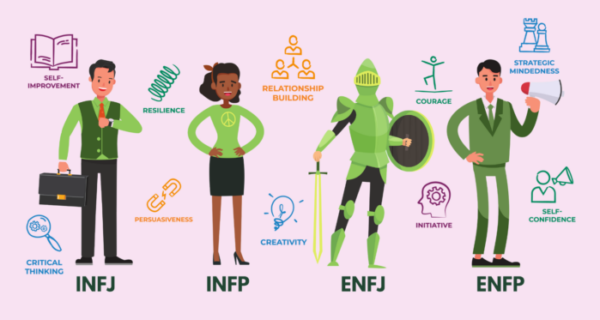
Hire a CEO: A Guide for Hiring and Motivating High-Level Employees (CEOs, COOs, and Directors)
There are many challenges when you hire a CEO and high-level employees, from finding the best talent to compensation strategies.
Fortunately, at eCommerceFuel, we can share strategies our 7- and 8-figure brand owners use so that you can avoid making costly mistakes.
In the guide, we’ll learn how to hire a CEO and directors, how long to give employees in their new roles, and much more.
Table of contents
Hire a CEO – The Mindset
Before hiring a CEO or director, you may be asking yourself whether you need someone in the first place. After all, high-level employees won’t make your problems magically disappear. Hiring the wrong person may even add to your problems.
On the flip side, many of our members wish they had hired someone sooner.
Either way, you must be careful who you “let on the bus.” In Good to Great, Jim Collins compares a business to a bus and the leader to a bus driver.
It would help if you had someone who could drive.
Collins also explains that it’s crucial to ask, “first who, then what?” You don’t want someone who will kill the positive company culture you’ve built. “When in doubt, do not bring the person on the bus.”
If you do hire the right people, you may find yourself feeling less and less useful. This is a common experience among our members.
Just remember that building a great team will give you more time to do essential things. In addition, offloading menial tasks will free up your time to focus on bigger-picture goals for your company.
Increasing your payroll to bring in a CEO or director will also likely create more value for your business in the long term.
And even though they’ll cost you more, many of our members recommend hiring “A players” rather than “B players” from the start.
Paying the extra money is nearly always worth it.

Photo by Nubia Navarro on Pexels
How to Find Your Perfect Executive Hire
Most business owners are capable of finding reliable employees for low-skilled roles. However, how do you find people who can think independently (i.e., your perfect executive hire)?
Many of our members recommend referrals. Message your trusted friends and tell them who you’re looking for. The best scenario is when you don’t know the recommended executive or director personally, but someone you trust does.
Another option is to promote someone from within your company. This approach has worked well for many of our members, although it can take years to train someone up to the necessary level.
Going down the traditional route of posting a job online may work best if you’re looking for someone quickly. More on this route shortly.
But there is another less orthodox approach: when you meet someone you like with a great work ethic and personality, ask them if they’d like to work for you. It’s not particularly scalable, but it has proved effective for some members.
Whichever route you choose, a thorough hiring process is vital to hire the right person.
Here’s one that works for our members.
How to Hire a CEO – The Process
One of our members offers a cautionary tale about the hiring process:
“When I started my company, I received advice that I should hire for skills, not personality. So I found the most competent, intelligent person, and they did a fantastic job – except they were not the right fit for our company…
“After a painful year, I had to fire my first employee..”
So how do you avoid hiring someone who’s not a fit for your company?
Our community member who went through this painful experience recommends going through two pre-hiring steps before you put together your job description.
The first pre-hire step is a brainstorming session. What do you want from your future CEO or director? Write everything down and visualize the best and worst-case scenarios for the position.
The second pre-hire step is a candidate trait matrix. Based on your brainstorm, identify the top three traits in these areas: hard skills, soft skills, and culture.
These exercises will help you understand who your perfect hire is.
Many community members then recommend going through a multi-step hiring process. Here’s a top-line view before we break down the steps in more detail:
- Step #1: Write Your Job Description
- Step #2: Post Your Job
- Step #3: Screening Resumes & Personalities
- Step #4: The Phone Screening Interview
- Step #5: Skills Test
- Step #6: Group Interviews
- Step #7: Face-to-Face (F2F) Interviews
- Step #8: Reference Checks
- Step #9: Make An Offer
Step #1: Write Your Job Description
Many of our members agree that you need to consider your job description as marketing material.
After all, hiring a CEO or director is as much about selling your company to them as it is selling to you.
In our community forum, you’ll find many job description examples that lean into this thinking. One of our members even coined the phrase “non-traditional job descriptions”. They explain that they prefer to hire personality over skills, so their job descriptions are primarily about personality and company culture.
These descriptions can also act as a filter. If you write unique job descriptions that mention your love of pizza and dogs (as one of our members does), and the candidate doesn’t address these in their application, you can be pretty sure they have yet to read it thoroughly.
Finally, it’s worth posting the salary range in your descriptions. You’ll likely get more qualified candidates rather than having to pick from a pool of people you can afford.
Step #2: Post Your Job
Once your job is ready, you need to get it in front of as many relevant people as possible. One of our members has successfully used Jazz to manage this process: “They will post on multiple job boards, all with a single click.”
Indeed, LinkedIn and Dynamite Jobs have also proved popular among our community members.
Other members have done detailed breakdowns of which job boards are best through rigorous testing. You can find these breakdowns when you join our community.
Step #3: Screening Resumes & Personalities
Now that you’re getting candidates applying for your job, you need a quick and efficient way to screen them.
Many of our members recommend the Myers-Briggs personality test to see whether a candidate could be a good fit within your company. PxT Select is also recommended.
As for resumes, if candidates still need to complete all the relevant information (salary requirements, portfolio, cover letter), this is a quick way to pass on them.

Image from strengthscope.com
Step #4: The Phone Screening Interview
The phone screening interview is crucial when you hire a CEO or director.
That’s because a quick 15-minute phone call can help whittle down the applicants before the next few steps, which are time intensive.
Here are things to check during the phone screening interview:
- Outline the hiring process & timeframes
- Confirm they are okay with the pay for the job (avoids negotiation at the end)
- Confirm they are okay with working on location in your office
- Confirm that they know there are reference checks at the end of the process
- Find out if there are any other things you need to know about (other jobs they’re interviewing with, how interested they are in the job, upcoming travel)
- Screen for communication style
As one of our community members explains, “we’ve found that founders are great at screening out candidates, but other employees pass everyone on to the next stage.”
“I’d lean on going with your gut here and not being afraid to screen a candidate who doesn’t sound like a good fit.”
Step #5: Skills Test
In this step, you want to ensure candidates can succeed in their roles. Many of our members start with an email-based skills test from CriteriaCorp.
In-person skill tests can be equally effective. You can watch candidates solve real-world problems and gauge their proficiency with your company’s tools. Administer tests the same way so you can compare them if needed.
Step #6: Group Interviews
Many of our community members recommend group interviews.
There are different ways to do this. You may put candidates at ease and encourage them to be friendly with one another. On the other hand, you may prefer more cut-throat competition.
Either way, the way you structure the group interviews is crucial. Again, there are some great examples of how to do this in our community forum.
Step #7: Face-to-Face (F2F) Interview
Before asking questions, try to bring out the best in candidates. You can do this with a few jokes, keeping the interview relaxed, and asking candidates if they’re hungry or thirsty before the interview.
Once you’re ready to interview, our community members have lots of suggestions about interview questions. You can find these when you join our community.
Examples include:
- Why do you want to work here?
- Why did you leave your last job?
- What was your biggest accomplishment at your previous job?
It’s also worth scheduling a final review of candidates with your team to ensure they’re happy with your choice.
Step #8: Reference Checks
When doing reference checks, it’s helpful to fact-check resumes and to ask previous employers about a candidate’s weaknesses.
If a candidate has reached this stage of your process, it should be a formality. However, these checks aren’t a replacement for trusting your gut.
Step #9: Make an Offer
You’re in the home stretch and ready to hire a CEO or director!
Here are a couple of sense checks from our community:
- Only make offers to candidates you can’t wait to start working for you. If you’re on the fence at all, don’t hire them. The best candidates are also the ones who are working somewhere else and looking for the right fit.
- Look for people who have actually done the work and can drive growth from day one. Also, if this person is a key hire, ask your core team to give a thumbs up.
Hire a CEO – The Onboarding Process
When you hire a CEO or director, the onboarding process can take time.
Here are some tips from our community:
- “The higher up the position, the vaguer I leave things to allow [the new hire] room to grow and fill out the role. It’s also a good test to see how much of a leader they are.”
- “I hired him to become CEO, but not overnight. He first managed the warehouse team, then the warehouse and customer service teams… After about a year, he took over the CEO role… I intentionally stayed out of his affairs so he’d understand that it was his team to run…”
Step back when you hire high-level employees and avoid micro-managing. Stepping back sounds easy, but it’s much more difficult in practice!
Systems are also helpful. Some members recommend documenting step-by-step processes for your business, and The E-Myth Revisited often floats to the surface.
After all, systems run the business, and people run the systems.

Photo from movemequotes.com
Motivating CEOs and Directors
Hiring and onboarding are just the start. Once you hire a CEO or high-level employee, you need to motivate them so that they choose to stay.
One crucial factor is the compensation package you offer. One way to do this is to structure a base salary with incremental bonuses based on revenue growth. In our community forum, members detail various ways you can do this.
No matter what, you need to consider what CEOs and directors contribute to your business. Once you do this, it’s easier to compensate them based on performance.
That said, it’s important to remember that this is your business – not your employees. Don’t expect them to work at the same level you do or with the same passion. Also, don’t expect 100% productivity. Even A Players will likely take breaks to check their email and social media.
Lastly, remember that little things are appreciated. Offer to buy them lunch. Get small gifts for good work. Sincerely ask about their families.
A human touch goes a long way.
How Much Time Should You Give a CEO or Director to Produce Results?
There’s no right or wrong answer to this.
Many of our members tell candidates up-front that their companies do evaluations every 30/60/90 days. In addition, six-month probationary periods are also standard.
As one member suggests, “it will take 30 days to get onboarded, another 30 days to set up, [and] another 30 to see how things are going…”
No matter how long you give a new hire, it’s helpful to set expectations and have time frames in mind. For example, here’s how one of our members’ companies hired a new CEO:
“The board gave him certain milestones and goals to achieve within a specific time frame. Even CEOs need goals. However, they also gave him the capital to hire whom he needed and purchase what he needed to achieve those goals.
“I think this is the hardest part. Not only do you need to pay [high-level employees] more, but you also need to give them the resources. [Giving them resources] can be a costly endeavor, which is why there needs to be a time frame where you have to “cut your losses” if you aren’t getting the results…”
So there you have it!
Like many of our members, you may make some hiring mistakes along the way. Unfortunately, no one gets it right straight away. However, follow this guide, and you’ll soon be hiring for your next CEO or director.
Want More? Access 200+ Discussions From 1,000+ eCommerce Owners About Hiring Leadership Positions and Building Teams
If you want more tips and resources to help grow your eCommerce business. All our members are vetted practitioners – not vendors or beginners – ensuring everyone has a deep, meaningful eCommerce experience to share.
You can learn more about the community or apply to join today.


